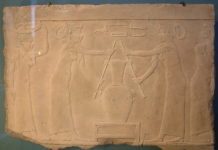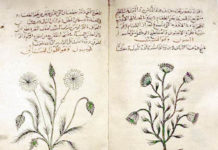The history of silk contains legend, follows the rise and decline of dynasties and empires, and mirrors the great movements of social and economic development.
From the mythic past of ancient China, through the industrial revolution of Europe and into the modern age of computer aided design, silk has continued to be a high value fashion item throughout the ages.
The Opening of Silk Routes
China has maintained a monopoly of silk production for the better part of three thousand years. According to Confucius, it was in 2640 B.C. that the Chinese princess Xi Ling Shi was the first to reel silk from a cocoon that dropped into her cup of tea.
The Chinese were naturally secretive about silk, but by the 3rd Century B.C. Chinese silk fabrics were beginning to find their way throughout the whole of Asia, and were transported overland to the West and by sea to Japan on what became known as the silk roads. The Romans came across silk in Asia, but knew nothing about its source.
From 552 A.D sericultural (silkworm culture) began to spread throughout Asia Minor and the Mediterranean. The story has it that it was smuggled out of China by two monks with silkworm eggs hidden inside their bamboo walking sticks. It was further spread by the Arabs as they captured splendid silks from the Persians, carrying sericulture with them as their conquests swept them through Africa, Sicily and Spain in the 7th Century.
Silk Introduction to Europe
Increased trading opportunities between the East and West during the early medieval period saw the introduction of silk into Europe, resulting from the crusades, the formation of the Mongolian Empire and the travels of Marco Polo. Italy became active in the silk trade as early as the 12th Century.
In the period 1450-1466, Lyon became the centre for European imports of silk fabric. But this caused such a drain on capital that in 1536 Francois I created the Lyon silk industry by removing import barriers. The next major influence on the European silk industry was the Revocation of the Edict of Nantes in 1685, when the French Huguenots were forced out of France. They settled in Germany, Britain, Italy and Switzerland where their skills contributed to the development of a European silk industry, which continued to prosper to the early 19th Century.
Decline of the European Silk Industry
The 19th Century saw a decline in the European silk industry that was the result of a combination of opposing trends that sounded its death knell. In 1804, Jacquard utilised perforated cards to produce figured fabrics, which boosted production in Lyon and other countries. The Industrial Revolution and increased mechanisation not only made silk production cheaper, but hugely increased production. Japan, however, had made tremendous improvements in reeling techniques, and flooded the European market with cheaper and better quality products following the opening of the Suez Canal in 1872.
The Pébrine (silkworm disease cured by Pasteur) virus, agricultural reform and unrest, population movements from the country to the cities, together with the introduction of cheaper man made fibres, hastened the decline of the European silk industry.
The Second World War saw the end of Japanese raw materials in both the US and Europe. Supplies had been coming from China, but this too was cut off by the Japanese invasion of the country. New synthetic materials, including blends with silk, soon filled the supply vacuum. It was all but the end of European sericulture.
When the war ended Japan returned to its ascendant position as a world leader in the production and export of raw silk until the 1970’s when they were overtaken by China. China now dominates the world market, both as a producer of raw silk and as an exporter of finished silk products, and has about two thirds of the world market share. Although some developing countries are emerging as serious silk producers – India, Korea, Thailand, and Brazil – Chinese silk has stood the test of time.








